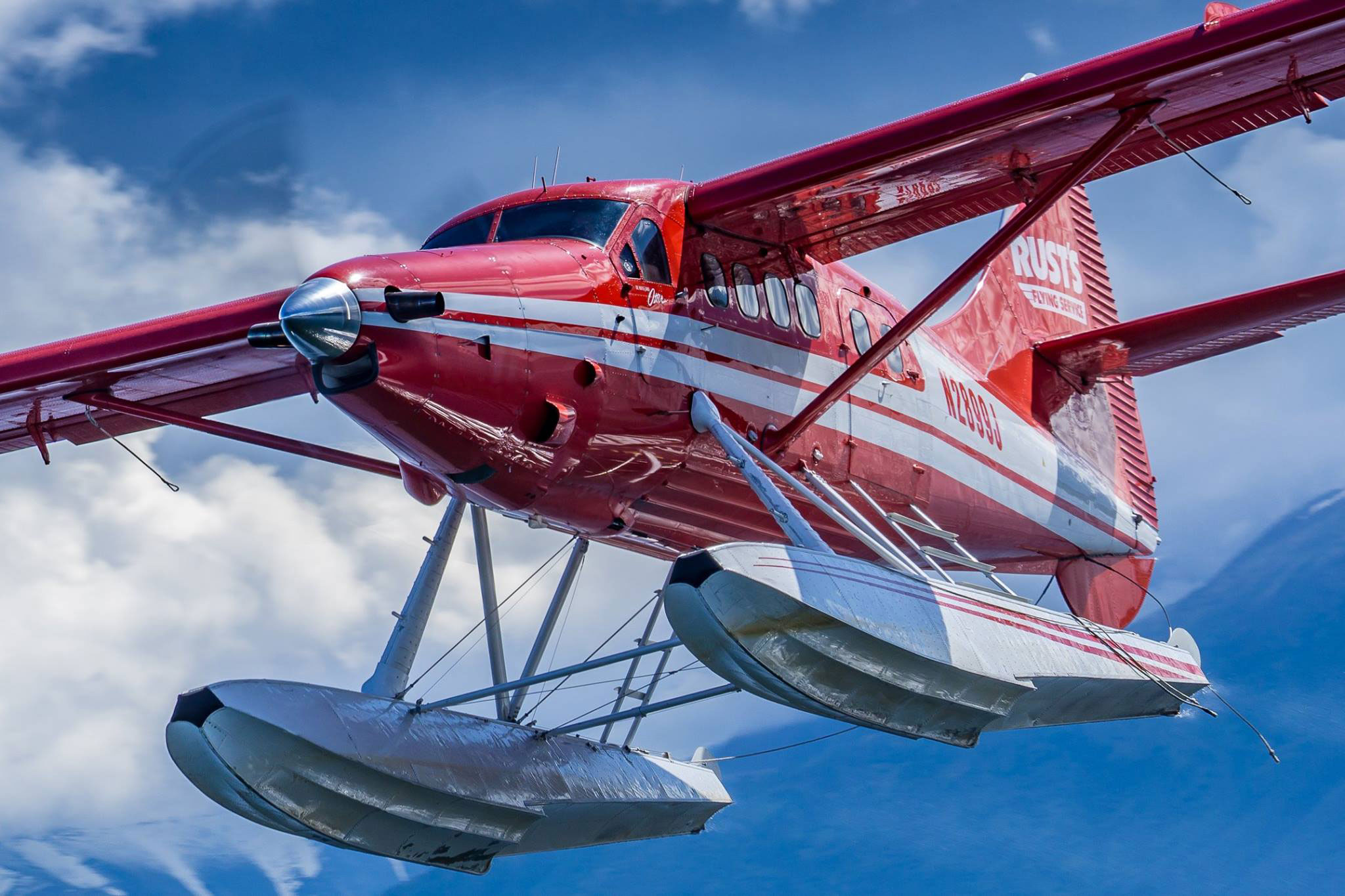Estimated reading time 14 minutes, 27 seconds.
Alaska is one of the planet’s last great unspoiled territories. Often referred to as “The Last Frontier,” Alaska provides seemingly limitless opportunities for those hearty souls seeking the ultimate in bold, outdoor adventure.
Those looking to travel throughout Alaska must carefully plan the logistics of getting around, as there is currently only one real highway system — a 1,082-mile (1,740-kilometer) loop in the southeast corner of the state connecting the population centers of Anchorage and Fairbanks with the Canadian border and the port city of Valdez.
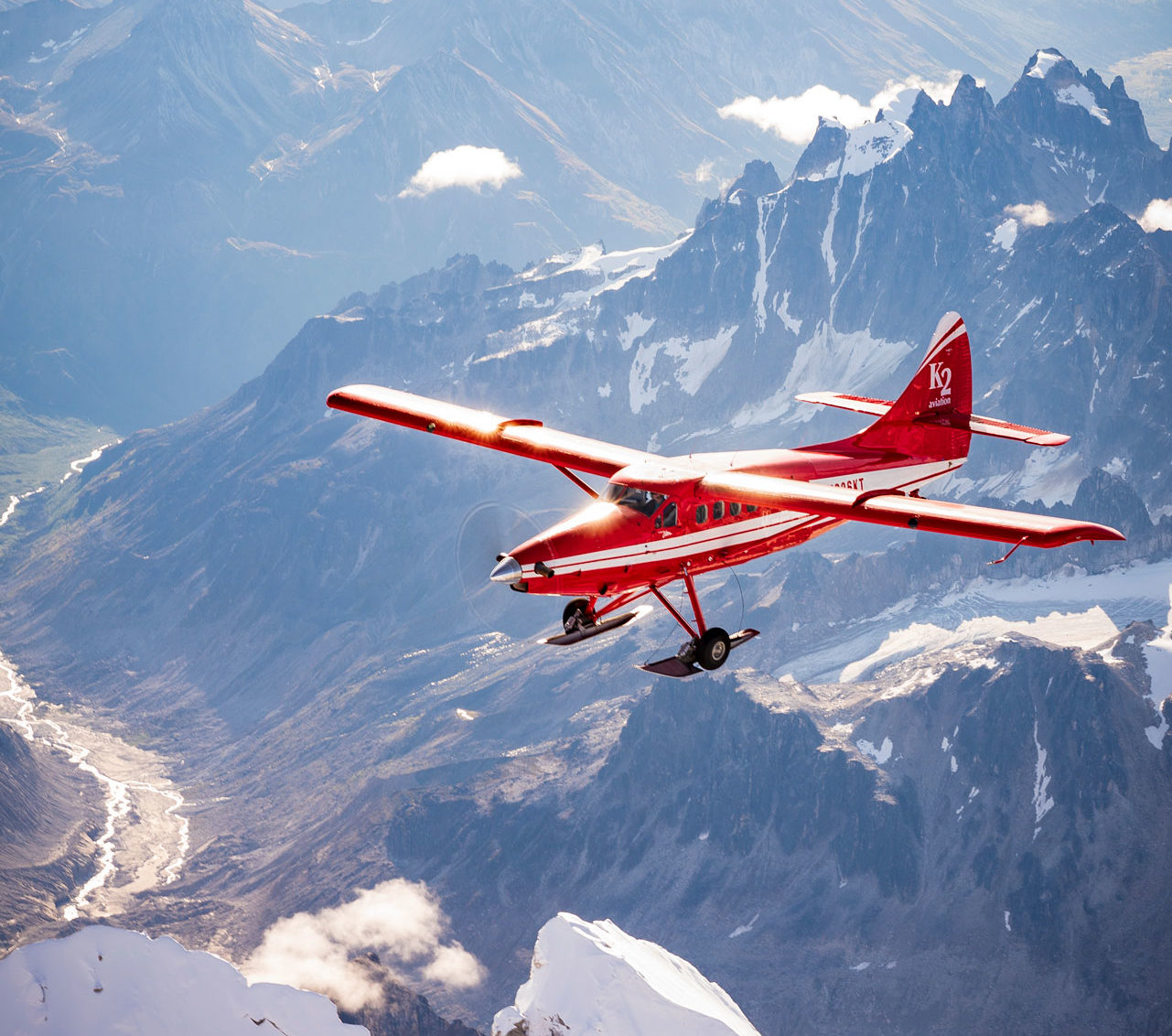
Travel throughout the rest of the state’s 572,000 square miles (1.4 million sq km) of wilderness, whether for personal transportation, backcountry trekking, fishing, hunting, or sightseeing, is best accomplished via aircraft.
One of Alaska’s largest air taxi and flight tour operators is Anchorage-based Rust’s Flying Service (RFS) and its sister company, K2 Aviation.
These are family-run businesses that operate a mixed fleet of 22 fixed-wing aircraft — two Cessna 185s, four Cessna 206s, a Cessna 208 Caravan, four De Havilland DHC-2 Beavers, two Turbo Beavers, six Turbine Otters, a single Australian-built GA8 Airvan, a Piper Cherokee Six, and a Piper Navajo Chieftain — each plane adorned in the companies’ unique red-and-white livery.
Frequently operating to and from water, glaciers, and gravel bars, RFS and K2 together own the distinction of the largest off-airport operator in the U.S.
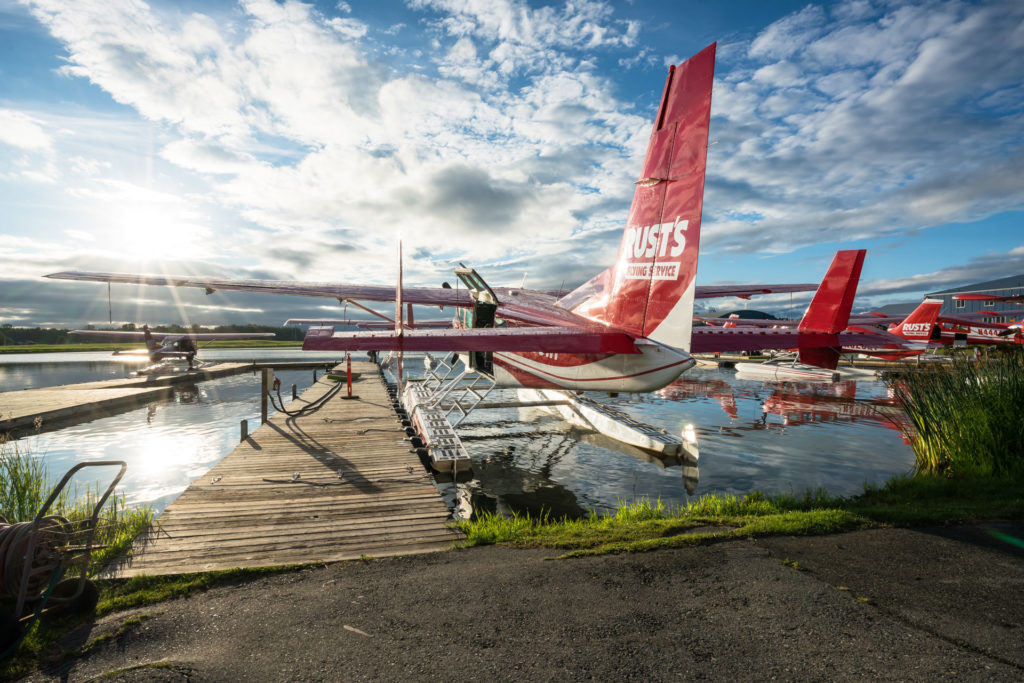
Tourism and “flight-seeing” are the primary drivers for both operators. However, each does have its own specialty that sets one apart from the other.
During the summer and early autumn, RFS’s bear viewing tours are hugely popular. High concentrations of Alaskan brown bears and their smaller cousins, American black bears, are drawn to the rivers and creeks of Katmai National Park and the adjoining Lake Clark National Park for the seasonal salmon spawn.
Guests board airplanes in the morning for a two-and-a-half to three-hour scenic flight to one of four viewing destinations. There, guests can see any number of bears from a relatively close, but safe, distance as they feed and interact with one another.
Three bear tour destinations are water landings via float plane. At the fourth location, wheeled planes are used for landing on a small beach where guests are escorted to a nearby lodge for the viewing experience.
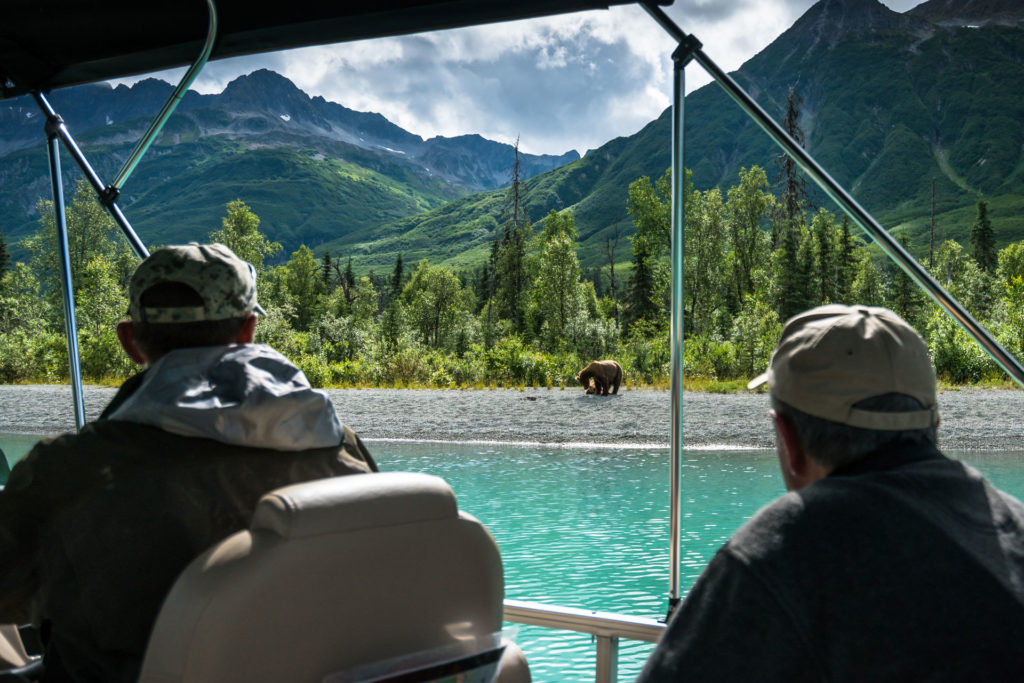
“The bear tours have become a really big component of our business at Rust’s in Anchorage,” said Todd Rust, co-owner and director of operations.
One bear viewing location (at Katmai National Park) is so popular that RFS will send aircraft every day during the month of July, weather permitting.
In addition to the bear tours, RFS offers other flight excursions, including glacier and wildlife tours, as well as guided and unguided floatplane trips into the Alaskan backcountry for some of the world’s best salmon and trout fishing.
Meanwhile, K2 is based in Talkeetna, 80 miles north of Anchorage. This tiny village is in the shadow of Denali — the crowning peak of the mighty Alaska Range and the highest mountain peak in North America. So, naturally, K2 caters primarily to those seeking to experience the mountains’ majesty.
“K2 is focused on Denali,” said Rust. “Everything they do is all about Denali.”
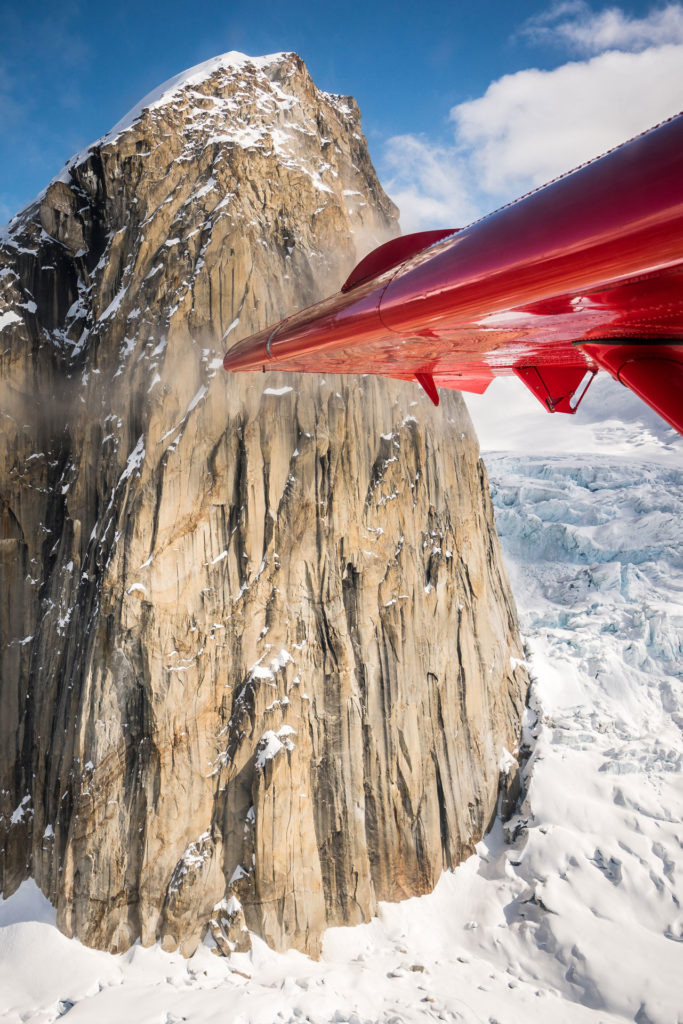
Whether it’s mountaineers who are looking to climb Denali, or tourists who just want to see it, “we take thousands of people up on the mountain and land on the glaciers with our ski planes,” he said, “and we’ll do that all summer long.”
K2 offers three flight-seeing packages to view Denali National Park, each lasting one to one-and-a-half hours. The company also offers packages for those seeking more unique, physically challenging adventures, like backcountry hiking or climbing expeditions, or perhaps a summer wedding on a glacier. Moreover, K2 provides support for utility projects within the national park, among other operations.
“This is truly an amazing place,” said Suzanne Rust, company co-owner. “Here, you have this visual rise of rock and ice that goes from sea level to 20,310 feet (6,190 meters). It’s almost a 20,000-ft (6,096-m) vertical rise right in front of your eyes.
“It’s also unique in that it’s really accessible for people,” she added. “Whether you come here and take an airplane ride or you drive a car to stand on an overlook… you can see Denali from different perspectives. And really, Talkeetna is the place to see the mountain.”
Suzanne came into the Rust family with several years of experience working with the National Transportation Safety Board regional office in Anchorage. Her background made her an ideal candidate to build the K2 team and infrastructure to maximize safety, efficiency, and guest experience. Ultimately, she was given the responsibility of overseeing K2’s day-to-day operations, which she maintains today.

Modest Beginnings
Henry “Hank” Rust was a retired U.S. Air Force colonel who founded RFS in 1963. During the Second World War, he piloted 50 combat missions, mostly flying B-25 bombers in the South Pacific. In 1962, he and his young family settled in Alaska. Intent on continuing to fly, he acquired a two-seat Piper PA-18 Super Cub and developed a business plan. His “one man, one airplane” operation ferried hunters and fishermen from a seaplane base in Anchorage into remote, wild Alaska.
While the Super Cub was certainly a capable utility aircraft, and fun to fly, it didn’t have the carrying capability necessary to effectively move sportsmen and their equipment.
To better serve his clients, Hank Rust acquired a Cessna 185 Skywagon. The rugged, six-seat, single-engine tailwheel plane provided the room and performance to better meet the needs of his clients. It was primarily utilized as a floatplane, however, it could also be equipped with skis and tundra wheels.
The small operation quickly developed a reputation among sportsmen. Hank Rust’s personal interest in hunting and fishing, his many years of experience as an aviator, and his knowledge of the Alaskan wilderness made his services desirable.
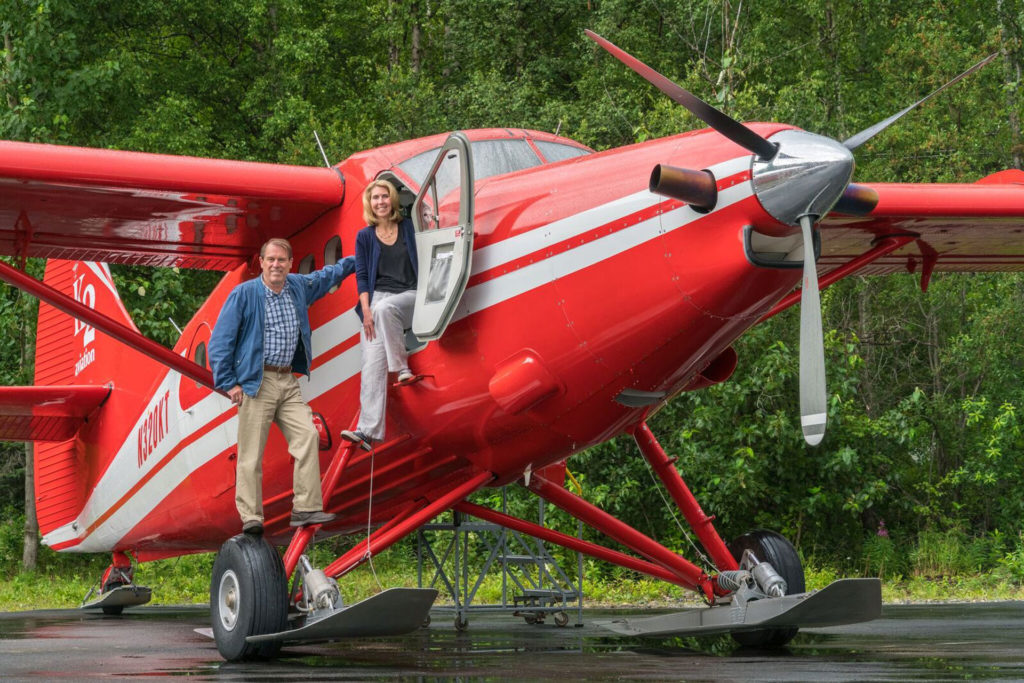
As his business began to grow in the 1970s, Rust brought aboard other seasoned bush pilots and grew the fleet to 17 aircraft.
During these early growth years, Hank Rust’s two young sons, Todd and Colin, became increasingly involved in the business. As youngsters, both boys worked as dock hands around the floatplane base.
Todd Rust joined his father at RFS in 1983, after earning a college degree and working as an aeronautical engineer for two aerospace manufacturers. Colin Rust earned his FAA Airframe & Powerplant certificate in the late ‘70s, eventually taking on the role of director of maintenance at RFS in 1996.
“The fleet was pretty different then than it is now,” said Colin Rust. “Certainly, we had the Beavers, and we had a couple [Cessna] 206s, but mostly it was [Cessna] 185s. It was a day-time job where you did what you had to do to get the job done, and sometimes that meant 14-hour days.”
Around the same time that Colin Rust joined RFS, Todd and Suzanne Rust heard that K2 Aviation was for sale. They saw it as an opportunity to expand and diversify RFS from a mostly floatplane operation, which would nearly double the RFS fleet overnight. Within the year, the deal was done and K2 and its fleet were acquired. Both companies were eventually enveloped into a single FAA certificate, operating from two different stations.
Prior to the purchase of K2, landing at the high glaciers on Denali wasn’t something the Rusts were entirely familiar with.
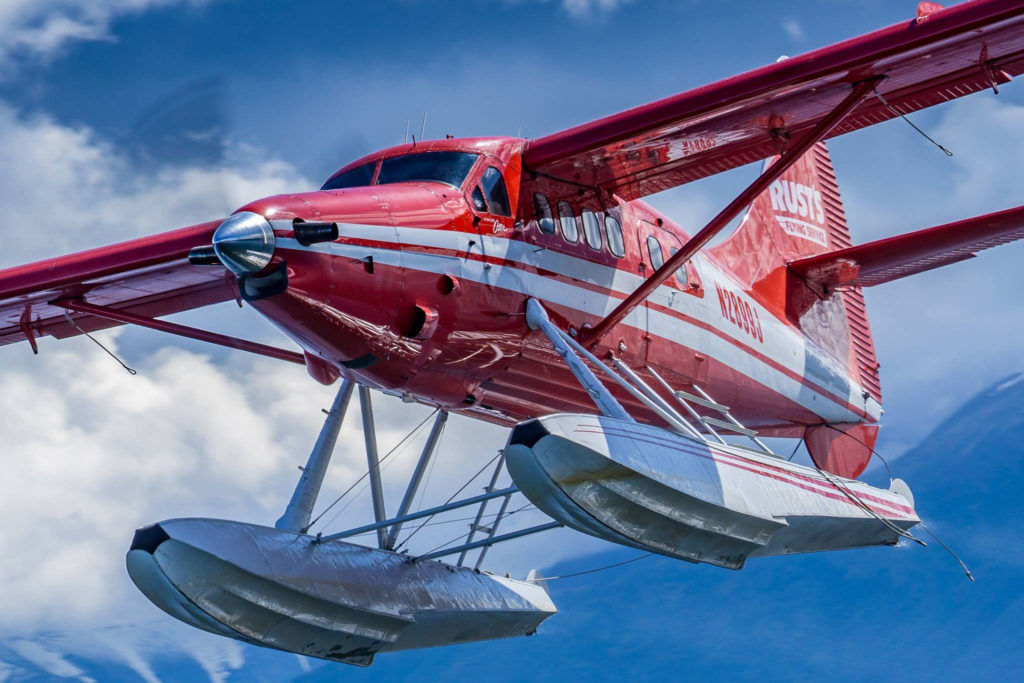
“It was kind of foreign, at first,” said Todd Rust. “We really didn’t have any experience landing on glaciers. At first, it seemed kind of crazy. I knew there were people up in Talkeetna doing it, but I just thought they were kind of nutty,” he joked. “But as it turns out, it really isn’t as demanding as we thought.”
Making Adjustments
Today, RFS and K2 are adapting to the ever-changing business climate.
“The clientele has changed,” said Todd Rust. “We don’t have as many clients interested in hunting. The outdoorsman that we used to cater to is not so much an element of our clientele now.”
The fleet continues to evolve, too, to meet changing needs and enhance the customer experience.
“There’s a push right now to move into larger and higher end turbine-powered aircraft and move away from some of the piston-powered aircraft — from a reliability, safety, and capacity standpoint,” Rust told Skies. “So the fleet is continuing to evolve.
“I have a Turbine Otter being built in Canada that will go online next year,” he continued. “And I have a turbine Beaver that’s replacing a standard Beaver, which we’ve already done once. . . . So we’re going in those directions.”
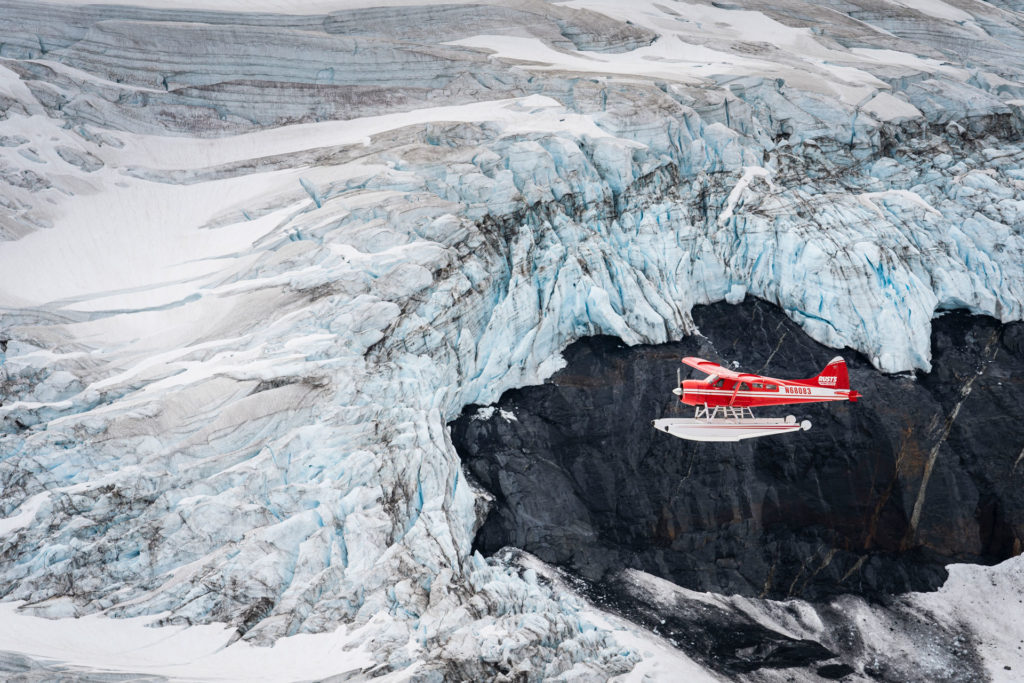
A busy year for RFS and K2 would see both companies fly a total of 35,000 guests, “which is roughly 2,000 hours for all 22 airplanes,” said Rust. Of course, Covid-19 wreaked havoc on both operations in 2020, with business sharply down. In 2021, however, business improved dramatically — so much so that it caught the team by surprise. “We went from 20 to 25 percent capacity in 2020 to 85 percent [in 2021], and we weren’t prepared for it,” admitted Rust.
While this resurgence in business should be a reason to celebrate, many employers are struggling to find workers.
“We’ve lost people from the industry, because when you go through a year where you have a 75 percent loss of revenue, the spigot is just turned off,” explained Rust. “Some people drifted away. They had to find something to do.
“We actually can’t find enough people this year, so we’re short staffed,” he added. “I think with the exception of mechanics, we need pilots, ramp workers, office staff, van drivers… everything.”
On the pilot side, specifically, RFS and K2 need pilots who can “land a ski-plane on a glacier. There aren’t a lot of pilots who have done that, so we have to train them to do that,” said Rust.
But RFS and K2 are “not in the business of training float pilots. You need to know what you’re doing before you come to work for us.”
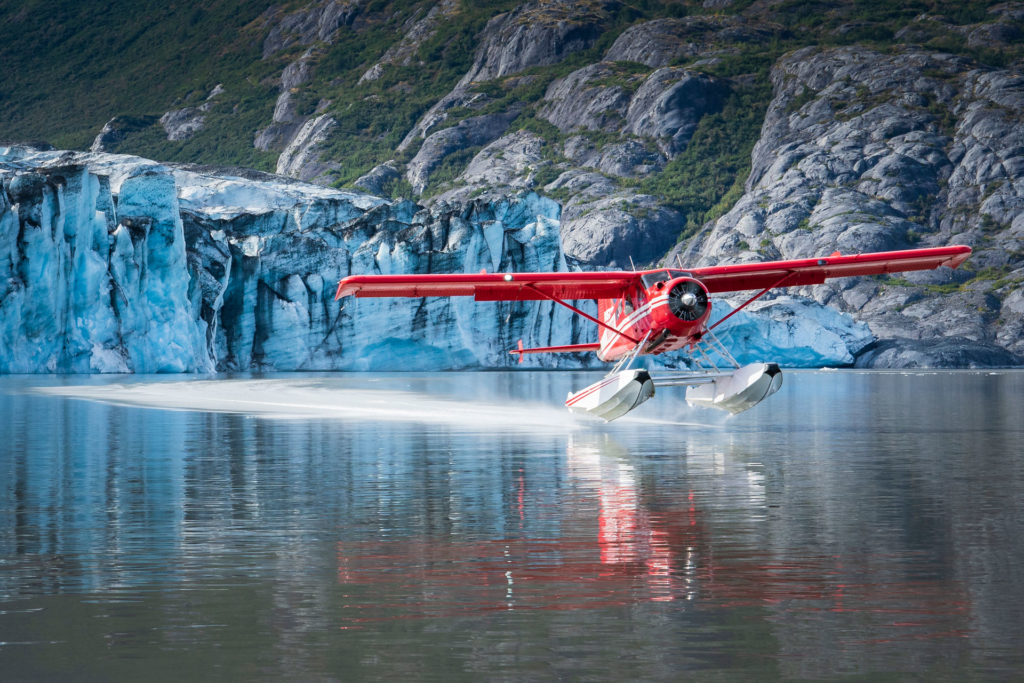
While operations are typically suspended by 95 percent in the winter, Rust said a handful of pilots will move to a mechanic role at that time, as the mechanics work year-round.
Despite the aftershocks of the pandemic — namely the personnel shortage — Rust remains optimistic.
“We did better than we expected this year, so much so that we were short-handed all the time. So much so that I was flying the line — 175 hours this year — just filling in. We couldn’t keep up!
“All in all, we see Alaska tourism as being pretty solid.”
